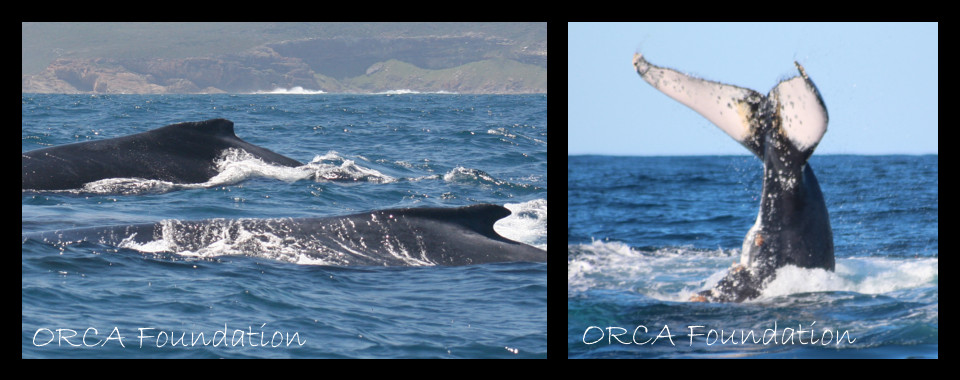Humpback whale migration – the what, when, where, and why??

Over the past few months we have had some really fantastic sightings of humpback whales Megaptera novaeangliae on our boat trips! You may wonder if the whales are still around, and yes, they are! We have been getting our best sightings of the whales off the point of Robberg as they are seldom inside the bay. We saw our first humpback whale of the season on 11 June 2016, and we will see our last for the 2016 whale season sometime during October and November. Migration is the persistent movement between two destinations, and the annual migration of baleen whales include the longest known mammal migration. It is a well-known fact that humpback whales undertake annual migrations from summer feeding grounds at high latitudes to winter breeding grounds in subtropical and tropical waters. In the southern hemisphere the whales move from productive Antarctic waters to warmer breeding grounds in Madagascar and Mozambique. Numbers of humpback whales peak on breeding grounds between July and September, with peak numbers on feeding grounds between November and March. Very interestingly, humpback whales show high site fidelity to both their feeding and breeding sites. During their migration humpback whales will tend to move along near-shore migration corridors that hug the coastline of the African continent, moving from headland to headland depending on the conformation of the coast. Although behaviours that are reproduction related (such as singing, and male-male competition) have been often observed during migration, feeding has very seldom been observed. The reason for the southward migration to Antarctic waters has always been clear – these waters are highly productive and provide predictably successful foraging for the whales. The reason for the northward migration to warmer tropical breeding grounds is more uncertain, and there are a number of hypotheses for this. The most likely are the killer-whale hypothesis, which suggests that by moving to a lower latitude the risk of calves being predated by killer whales is less, and the calm water hypothesis, which suggests that calm waters further north provide an easier environment for calves to swim and surface in resulting in energy saving; calm shallow waters also has a reduced predation risk. There may also be benefits to calf thermoregulation being in warmer water but this is uncertain.
Written by: Minke Witteveen
For further reading:
- Best, P.B., Findlay, K.P., Sekiguchi, K., Peddemors, V.M., Rakotonirina, B., Rossouw, A. and Gove, D. 1998. Winter distribution and possible migration routes of humpback whales Megaptera novaeangliae in the southwest Indian Ocean. Marine Ecology Progress Series 162: 287-299.
- Corkeron, P.J. and Connor, R.C. 1999. Why do baleen whales migrate? Marine Mammal Science 15: 1228-1245.
- Dawbin, W.H. The Seasonal Migratory Cycle of Humpback Whales. In: Norris, K.S. (ed) Whales, Dolphins, and Porpoises. Pp: 145-170. University of California Press, Berkeley.
- Tynan, C.T. 1998. Ecological importance of the Southern Boundary of the Antarctic Circumpolar Current. Nature 392: 708-710.




